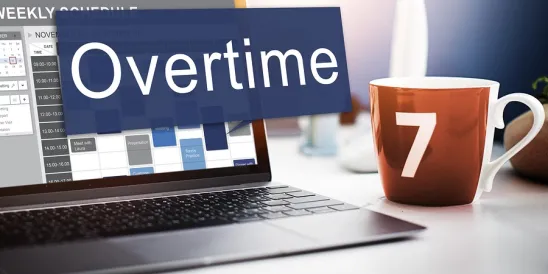The Department of Labor (DOL) exceeded its authority when it doubled the minimum salary levels for exempt executive, professional, and administrative employees under the Fair Labor Standards Act (FLSA), ruled federal judge Amos Mazzant of the U.S. District Court for the Eastern District of Texas today. Granting summary judgment in favor of the states and business plaintiffs who challenged the new overtime rule last November, Judge Mazzant determined that the DOL’s new overtime rule “effectively eliminates a consideration of whether an employee performs ‘bona fide executive, administrative, or professional capacity’ duties.”
Exempt Duties Are Part Of The Analysis
Judge Mazzant wrote that although Congress delegated authority to the DOL to define and delimit the white-collar exemptions, Congress was clear when enacting the FLSA that the exemption determination needs to involve a consideration of an employee’s duties, rather than relying on salary alone. He stated that the Obama-era overtime rule that significantly increased the minimum salary levels would result in entire categories of previously exempt employees who perform “bona fide executive, administrative, or professional capacity” duties being denied exempt status simply because they didn’t meet the salary threshold. Consequently, the elimination of an analysis of duties for those who failed to meet the new high salary level was inconsistent with Congressional intent.
A Minimum Salary Level Still Acceptable
When issuing a preliminary injunction last November, Judge Mazzant’s ruling raised the question as to whether any salary threshold could be used as part of the white-collar exemption tests. In his summary judgment order, Judge Mazzant appears to leave the salary-level part of the test stand, writing “[t]he use of a minimum salary level in this manner is consistent with Congress’s intent because salary serves as a defining characteristic when determining who, in good faith, performs actual executive, administrative, or professional capacity duties.” He notes that even though the plain meaning of Section 213(a)(1) does not provide for a salary requirement, the DOL has used a permissible minimum salary level as a test for identifying categories of employees Congress intended to exempt. Citing to a report on the proposed regulations, Judge Mazzant seems to approve of setting that salary level at “somewhere near the lower end of the range of prevailing salaries for these employees.”
No Automatic Increase Mechanism
The ruling also strikes down the mechanism in the DOL’s overtime rule that provided for automatic updates to the exemption’s salary levels every three years. In a cursory paragraph, Judge Mazzant wrote that having found the rule unlawful, the automatic updating mechanism was similarly unlawful.
Back To Square One
Now that the existing, never-implemented rule has been invalidated, the DOL is starting over with revising and updating the overtime exemption rule. The DOL recently published a request for information seeking public input on what the new salary levels should be, how updates should be made, whether duties tests should be changed, and other issues affecting the white-collar exemptions. We will have to see what new proposals the DOL puts out in the months to come. But in the meantime, employers can abandon plans to address the doubled salary thresholds under the Final Rule.
On Another Note, No Pay Data To Be Collected With EEO-1 Reports
In another development, on August 29, 2017, the Office of Management and Budget (OMB) directed the Equal Employment Opportunity Commission (EEOC) to immediately stay the requirement that certain employers provide pay data as part of a new EEO-1 report. The controversial pay-data rule would have required companies with 100 or more employees (and federal contractors with 50 or more employees), to submit the wage and hour information for employees according to race, gender, and ethnicity, with the information being used by the EEOC to analyze pay discrepancies and identify possible Equal Pay Act violations. Because of the stay, covered employers should use the previous EEO-1 form, which still collects data on employee race, ethnicity, and gender by occupational categories. Despite the reprieve for employers on the pay-data rule, EEOC Acting Chair Victoria Lipnic states that her agency remains committed to strongly enforcing federal equal pay laws.



 />i
/>i

